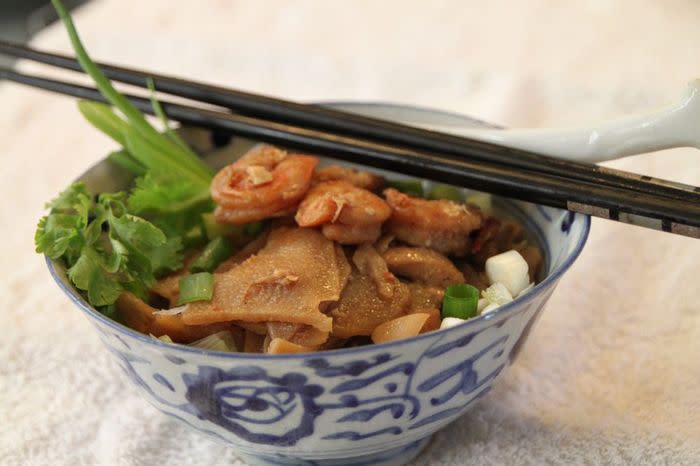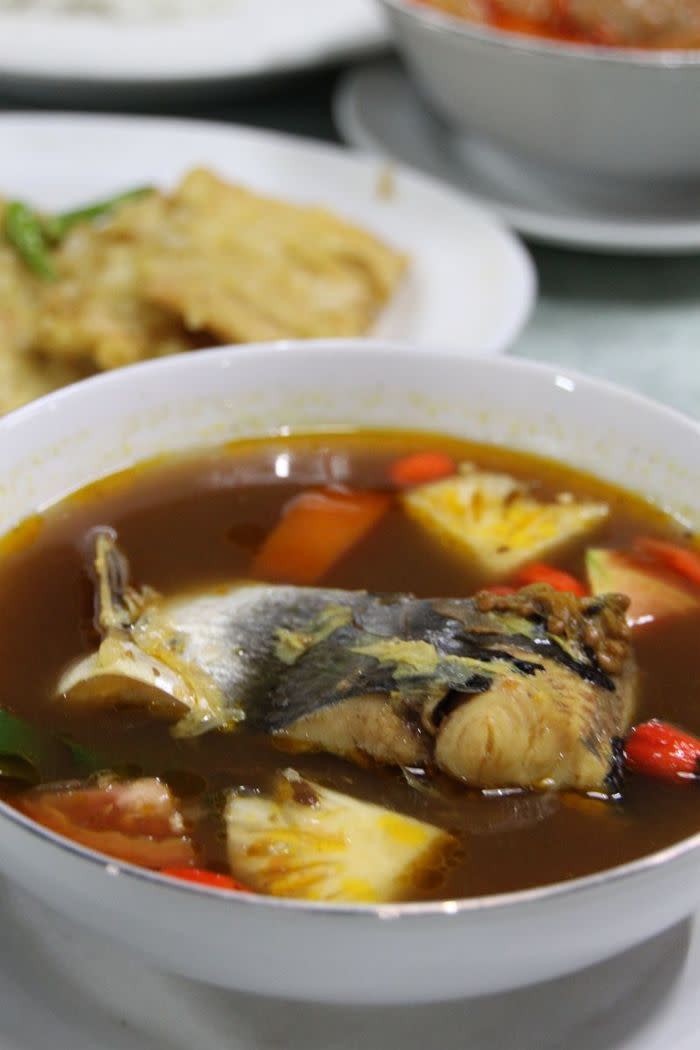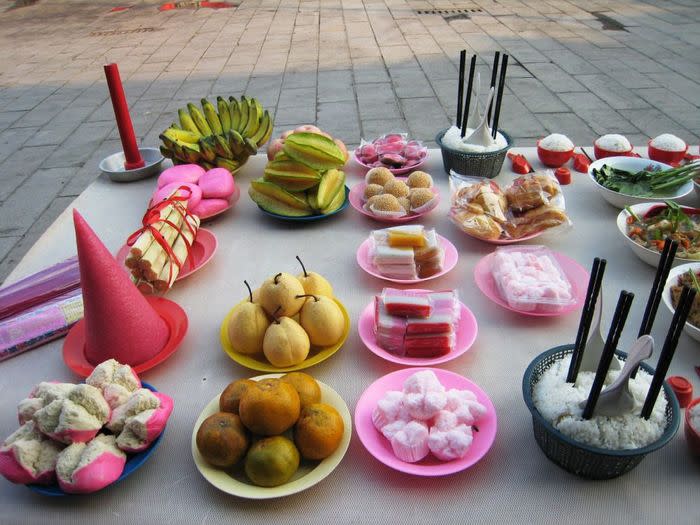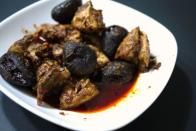Seven hidden Peranakan dishes
As a culture often defined as a mix of Indonesian and Chinese, the Peranakan culture is bound to have interesting-and delicious-dishes.
Video: 5 star Chinese New Year dish in 5 minutes
Bakwan Malang (meatballs served with broth, considered to have originated from the Malang region of East Java), bakso (beef meatballs), siomay (dumplings with peanut sauce) and capcay (stir-fried vegetables) are some of the popular dishes that can easily be found in restaurants as well as from street vendors.
But the renown of some Peranakan dishes is limited to the kitchens of Peranakan families. We are revealing the household secrets for you now by featuring seven that are worth a try-in sampling and cooking.
Ayam Abing
Ayam Abing is basically an opor (rich, mild, curry) dish with coconut milk that is browned as a result of roasting (frying without oil) grated coconut over a small fire until it turns a bright brown color due to the caramelization process. The milk is then extracted through hand-squeezing the roasted grated coconut.
Hipio Soup
The main ingredient of this soup dish is the pungent fish maw, which is deep-fried and then soaked in water before cooking.
Ca Rebung
Usually served during the Chinese New Year celebration, this dish symbolizes good fortune and success, since bamboo shoots –soft and tender as a newborn baby- represent new life and new hope. Like the fish maw, the bamboo shoot has a unique smell, and it has to be boiled four to five times with fresh water to be rid of it.
Babi Cin
Babi Cin is actually an attempt to reproduce Dongpo Pork which is famous in mainland China. In Indonesia, it is modified using local spices and herbs. This dish’s distinctive taste is due to the use of black jintan (Nigella sativa) and kencur (Kaempferia galanga).
Camcoan Fish
Tauco (soybean paste) is the main tastemaker for Camcoan Fish. This dish is actually very simple, but the idea of combining the strong-tasting paste with the fish itself is quite an impressive one.
Pindang Bandeng
Also one of the favorite dishes of the Chinese New Year celebrations, Pindang Bandeng represents the Chinese saying of ‘nian nian you yu’ which means good fortune and wishes that this year we will be able to save more in our bank account and will always be in good health. The use of belimbing wuluh (Averrhoa bilimbi) adds a mildly sour taste to the soup.
Ayam Buah Keluak
As the name suggests, this delicacy’s key ingredient is the keluak (Pangium edule)- a large fruit commonly found in Indonesia and several other regions in South East Asia.
Thanks to the keluak, the chicken turns a dark color, which might not be appetizing for everyone. But the fruit, which is actually poisonous in its raw form, is also the key to this dish’s tastiness.
Video: How to make Ca Rebung
Ingredients:
300 grams of bambo shoots, sliced.
100 grams of pork (some prefer pork belly).
100 grams of peeled shrimp.
4-5 cloves of garlic, crushed.
1 15 square-centimeter piece of dried squid, soaked in
water for about an hour then cut small.
2 tablespoons of fish sauce.
10-15 tablespoons of sweet soy sauce.
Salt, sugar and pepper.
Vegetable oil.
Directions:
1. Heat oil, put in crushed garlic followed by dried squid.
2. Put in shrimp and pork.
3. Put in bamboo shoots followed by fish sauce, salt and pepper.
4. Add sweet soy sauce and sugar to balance the taste.













